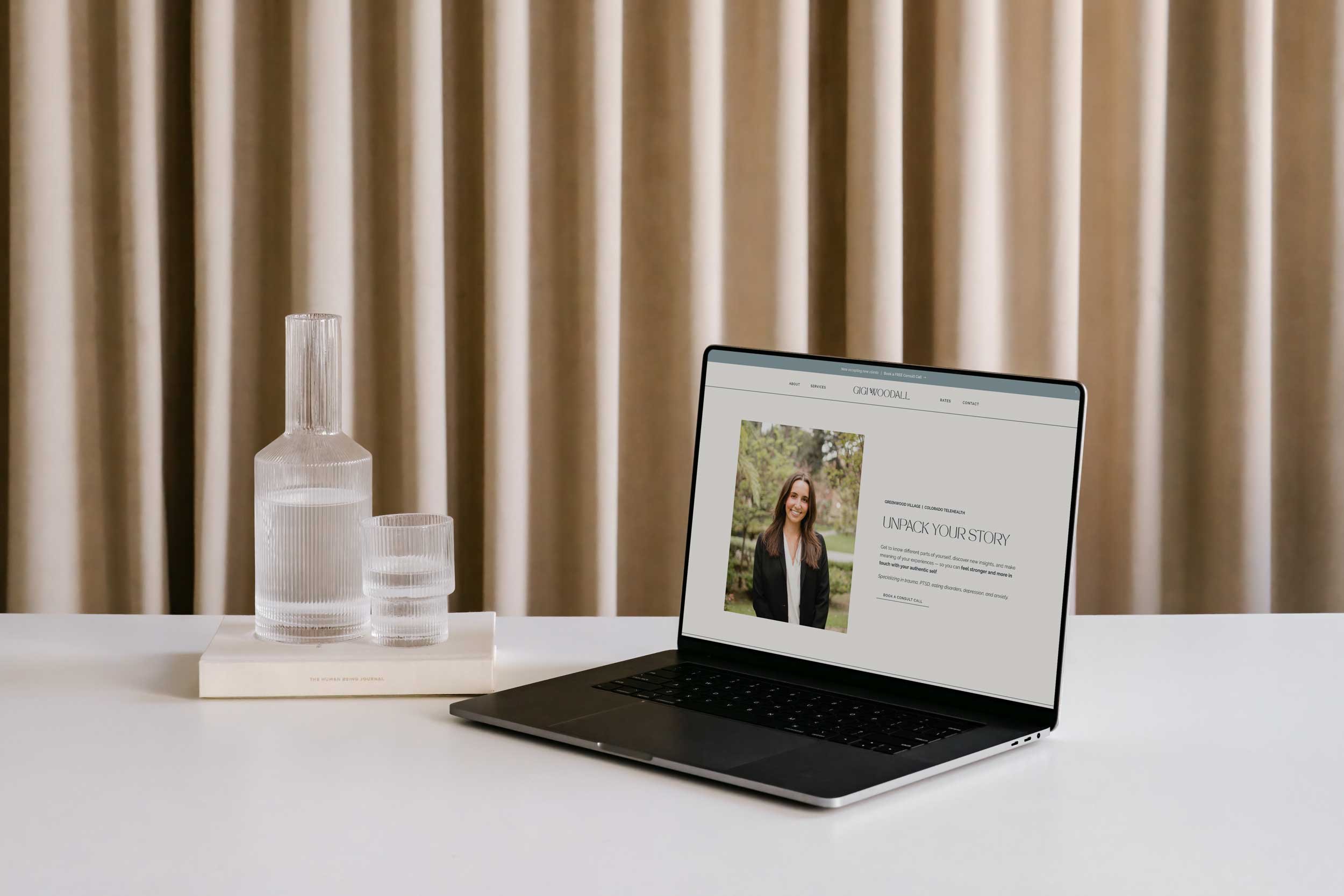6 Hacks to Make Your Blog Writing More Casual and Conversational
This post may contain affiliate links. I may receive a commission for purchases made through these links (at no cost to you!)
As a website designer, I work with a lot of professionals in industries where technical writing is the norm (therapists, wellness professionals, coaches, etc.). And while this style of writing is incredibly important for books, journals, professional articles, online bios, etc., it can really be a hang-up when it comes to writing blog posts.
Why is that?
Well, for starters, your blog is meant for your audience, AKA your clients or potential buyers of your course or passive income product. You're not writing for your colleagues or other professionals.
Will these people read your blog? Perhaps. But they're not your target audience. They're not the individuals that will most likely invest money (the goal) in your product or services.
The other thing to know is that writing in a more casual and conversational tone is just all-around easier to read.
And this is so important because readers of blog posts very rarely read the whole thing, and if you're writing in a technical way, it becomes all the harder for people to scan and digest. Leading them back to the land of Google and onto somebody else's site and offerings.
So I know you're interested in how to write more conversationally - obviously, because you're here. 👀 So, my friend, I'm happy to report that today I have some hacks to help you write in a more conversational tone that will keep readers interested in your website for longer and hopefully leads to that cash money you've been dreaming about.
1. Use voice-to-text
This first hack is not only great for writing in a conversational tone but also for writing quickly. It’s much easier to write in a casual voice when you’re speaking. You tend to use more slang and contractions and actually sound like yourself, which is great for clients if they're going to work with you in a one-on-one capacity.
They'll feel like they already know you.
So you can go about this a couple of ways.
Use the microphone on your phone
Add an extension to your browser. I like this Voice to Type Extension
It might feel uncomfortable at first, so here are some tips.
Try closing your eyes and picture a person you're actually talking to.
Don’t be afraid to say whatever comes to mind, some of the best writing is unfiltered, you can always edit later.
2. Add contractions
Hopefully, you did this while you were speaking, but if you did end up typing out your blog, then go back through and look for anywhere you could put in contractions. Contractions are a natural way of speaking. You don't typically find yourself in conversation saying, " I can not go to the movies with you tonight, I should not spend more money." That would be weird. 💀
3. Make your content easy to read with shorter paragraphs
Short paragraphs encourage reading.
I mean, think about it if you had the option between two different articles that were the same length, and one of them had a bunch of short paragraphs, and the other one had 2 long paragraphs, which one do you think you would choose? Which one do you think would be easier on your brain?
Plus, shorter paragraphs are easier to scan, and as we know, blog readers do not read your whole article they quickly scan looking for information.
So try for 2-4 sentences within a paragraph.
Bonus points:
Put a list of ideas in a bulleted pointed list
Put key phrases in bold, italic or a larger size
Use a different color for links
4. Write directly to your reader
Scan your article and notice how many times you're saying I, me, and us, and then rewrite those sections to say you. By doing this, the reader will feel as though you're speaking directly to them.
A great way to do this is to mirror their potential questions like, "So you're struggling with your morning routine..." or "I know how difficult it can be to write in a conversational way..."
5. Choose common over complex.
Think about the kind of words you would use in a conversation with your best friend. This will include slang, inside jokes, isms (words and phrases that only you say that people pinpoint back to your personality) even emojis are okay if it feels "on brand."
But try to avoid using any industry jargon. Your audience members are potential clients who are learning this information (sometimes) for the very first time and have no idea what you're talking about. So explain terminology in easy-to-understand ways.
And if it helps, you can think about writing at a 5th-grade level. This isn't to say that your audience is dumb, but coming back to the point, they are trying to gather as much information as they possibly can as quickly as they can, and when you write in a super simplistic way, it's easier to digest.
6. Don't be passive!
Passive writing is confusing, so focus on being direct in your writing. Not only does active voice make your writing more understandable, but it adds urgency, keeps your readers engaged, and makes them feel like you're speaking directly to them, which is what we want!
The difference between "the ball was thrown by Jack" (passive) and "Jack threw the ball" (active).
So there you go — six hacks for nailing that conversational writing style.
Need Design Help for Your Therapy or Coaching Business?
Creating an online presence should be easy... And with Squarespace, it is! 🥳
But I get it — setting up a professional website can still feel like a huge, overwhelming task.
If you're ready to build an engaging, client-attracting website but need a helping hand, you’re in the right place 🙋🏻♀️. My services are designed to take the website-building weight off your shoulders.
Check out my packages to discover how I can support you in bringing your online vision to life!






























